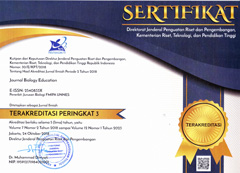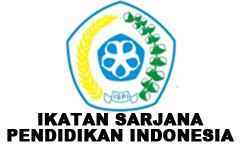Development of Learning Media Augmented Reality Nervous System (ARSaf) to Improve Student Understanding
Abstract
Learning practices in the midst of the Covid-19 pandemic do not allow face-to-face meetings at schools. In order to optimize the learning process, it is necessary to have appropriate learning supports and allow students to learn from home. The nervous system is a material that is difficult for students to understand because of its complex and abstract. Augmented Reality (AR)-based learning media can involve students in the learning process and help improve visualization skills. The purpose of this study was to analyze the feasibility of Augmented Reality Nervous System (ARSaf) learning media to improve students' understanding. This study uses a 3-D model (define, design, and develop) which is modified from the 4-D model by Thiagarajan, Semmel, and Sammel (1974) covering the define, design, develop, and disseminate stages. ARSaf learning media validation was carried out to validate the media and material aspects. Validation was carried out by media experts, materials experts, and biology teachers using a modified questionnaire from the 2014 BSNP and the book "Visual Usability Principles and Practices for Designing Digital Applications" (Schlatter & Levinson, 2013). Limited field trials were conducted at SMAN 2 Ungaran online. The research subjects were 18 students with different categories of cognitive abilities, namely upper level, intermediate level, and lower level students from three different classes. The results of the validation of material experts are 86.76%, media experts are 95.19%, validation of material by biology teachers are 94.12%, and validation of media by biology teachers 91.35%. After the validation stage, the product revision stage is carried out. The value of the results of the evaluation of student learning meets the KKM with the highest score of 100 and the lowest score of 75. The results of student responses are 82.85% and teacher responses are 89.13%. The results showed that the ARSaf learning media that was developed was feasible to be used to improve students' understanding.
The copyright of the article once it is accepted for publication shall be assigned to the journal as the publisher. The intended copyright includes the right to publish the article in various forms (including reprints). The journal maintains the publishing rights to the published articles.
This work is licensed under a Creative Commons Attribution 4.0 International License.







